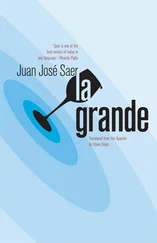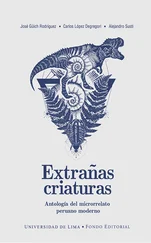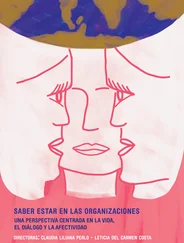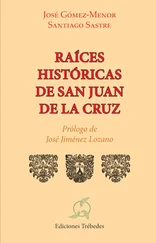“No, Doctor Sangan,” Gardf-Mhaly peremptorily insisted. “There is no one major que you. Ellos están indeed shipwrecked. And ellos necesitan be rescued as rápido as possible, porque they nunca should have crashed—or rather, their crash is such a secreto que nadie can even be allowed to sospechar que it took place. Pero the fact es, the ship on which An-Mhaly and Enti Kmusa were viajando has fallen in Brobdingnag…”
* * *
Quite the coincidence.
With or without permission from Jonathan Swift and his Gulliver, Brobdingnag is the world where laketons live.
I first heard about the creatures when I was eight.
I was with my father on one of his typical expeditions, this time to study the peculiar hypnopedic teaching system used by a religious sect on Beta Sextantis.
The deluded people there had concocted an intricate theology rooted in the worst aspects of New Age ecomysticism; they worshiped living beings, the bigger the better, as organic expressions of the Great Cosmic Principle.
More recently I’ve worked for them, on several occasions, actually. Their faith may be ridiculous, but they pay well and on time.
Even back then, their temple-zoo, which cost I don’t even want to know how many millions of solaria to build, held a grendel, two juggernauts, and, in a tank big enough for a squadron of battleships to perform maneuvers in, a middling-sized tsunami… They were also building an enormous high-pressure enclosure with the idea of keeping a laketon, no less! An idea that made Dr. Matsumoto Sangan and his entire team laugh till they cried.
When I asked my father what a laketon was, he gave me an unforgettable mini lecture on biology that might well have been titled “Las características del Planet Brobdingnag y de sus Inhabitants los Laketons, the Largest Life Form en el Known Universe, Explaneado para Children,” and he got me to understand why he had laughed at the pretensions of those environmentalist mystics.
Brobdingnag is the only planet orbiting its primary star, a red dwarf. The star can’t be seen from Earth, being hidden precisely behind the supergiant Antares. Therefore ancient human astronomers never gave it a name. Even today many know it only as Swift-3.
Swift-3 is located in a zone rich in cosmic dust, comet formations, and protoplanets. Head towards the Juhungan domain until you figure out you can’t breathe the hydrogen there, then zoom past the Amphorians, where you can check to see if methane works any better for you, and at last you’ll reach the edge of the Cetian sector, where you can enjoy the oxygen you needed all along.
The primary star is small, but the planet is enormous, just a tad smaller than Neptune in humanity’s original solar system. As big as a planet can get before being categorized as a true gas giant. It even looks quite a bit like the gas giants: though it’s completely solid, it has four or five dozen satellites and several tenuous rings, like Jupiter, Saturn, and Uranus.
Since the planet lacks a dense metallic core and is composed of fairly porous material, the gravity at its surface is “only” six times that on Earth—not past the limits of human resistance. We’re forced to withstand many more g ’s than that on plenty of shuttle launches and descents from orbit… But it’s a very uncomfortable place to stay for any length of time. That’s why almost everyone prefers to use space elevators to enter or leave a planet, except when they are truly pressed for time—as I was when Governor Tarkon called me to search for his careless spouse’s damned wedding band…
The massive gravitational force of Brobdingnag, plus the fact that it’s the only planet orbiting a small primary in a sector full of dust, comets, and other space trash, means that its surface is constantly pounded by heavy meteor showers. The meteoroids that reach its surface usually weigh a few kilos, but more than a few have masses ranging from hundreds of kilograms to a ton or more.
The crew of the Fancy Appaloosa , the human exploratory ship out of New Plymouth that discovered Swift-3 and mapped Brobdingnag right under the Cetians’ noses, the system being much closer to the Cetian sphere of influence than to ours, named the planet less for its own size (much larger planets exist) than for the vast dimensions of its principle inhabitants: the laketons, for which this rain of cosmic debris is a sort of manna from heaven.
The astronauts got a real shock when they realized, gazing through their telescopes from orbit, that what they initially thought were large chemical lakes scattered across the giant planet’s desolate surface were… slowly moving.
Laketons are unicellular amoeboid creatures. Since their form constantly changes, it isn’t easy to determine their exact dimensions.
But they’re big.
In fact, all adjectives seem miserably small and inadequate to describe them.
One fact should be enough to convey their vastness: The largest laketon ever recorded, which the veterinarian biologists who study them sarcastically and affectionately named Tiny, rarely measures less than 250 kilometers (!) in diameter by 10 kilometers thick.
If its cytoplasm were the density of water, it would weigh approximately 250 trillion tons . On Earth, that is. Given the gravity on Brobdingnag, you have to multiply that by six.
But actually, the protoplasm of a laketon is even denser than liquid mercury, which already weighs more than thirteen times as much as water.
I think that adds up to some twenty quadrillion tons . There are moons that weigh less.
Living lakes weighing trillions of tons . Laketons.
Just trying to imagine them is overwhelming.
And sort of humbling, too.
There’s no ship, no building, no artificial structure of any sort built by humans or any of the other “happy seven” intelligent races in the Milky Way that come close to their dimensions. Experts even think that the individual movements of a single laketon can cause minor fluctuations in the gravity of Brobdingnag and explain some curious irregularities in its orbit around Swift-3 that would have disconcerted Kepler.
And no one knows the upper limit on a laketon’s growth, if it has one. As living matter, it keeps growing larger and larger, slowly but surely. Tiny has grown a bit and put on some weight over the thirty-four years since the species was discovered. Today it’s about two hundred meters wider and half a trillion tons heavier than before.
Since its smallest fellow laketons, Gargantua and Pantagruel, are “merely” sixty kilometers in diameter and grow at a proportionately slower rate, experts have concluded that Tiny has been the largest cell and living creature in the galaxy since long before humans discovered fire.
A peevish Parimazo once calculated that at its current rate of growth, in about six billion years Tiny would outweigh all of Brobdingnag and might even be larger than its primary star, Swift-3. And in three and a half billion years, it could outweigh the combined mass of the Milky Way.
It’s good to know we won’t be around by then. Just in case.
Naturally, not even a planet as huge as Brobdingnag can harbor many creatures as immense as laketons. Only 611 of them have been counted moving across its surface.
The “small” laketons, Gargantua and Pantagruel, are assumed to be mere cubs. As weird as it seems to use the word “cubs” for those monstrosities, which must have been born around the time Columbus was discovering America, at the latest.
The speculation is that laketons reproduce by simple binary fission, like many well-known protozoa, but to date the process has never been witnessed. Given their longevity, whole centuries might pass before one decides to start dividing. The event might depend on some planetary alignment, or a cellular clock set by an unusually long biological time scale… or who knows what else. So much is still unknown about laketons.
Читать дальше












